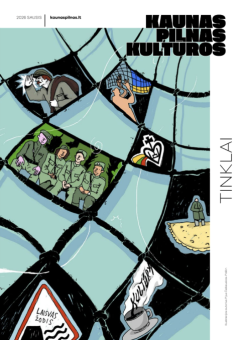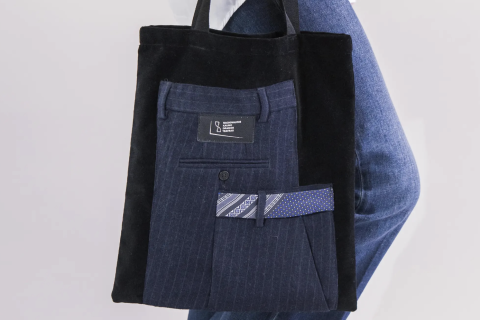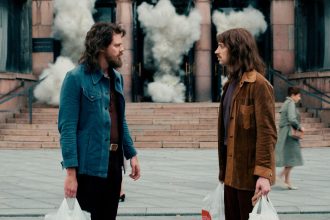Not a single climatologist predicted
a scenario like this.
Maybe someone had a feeling – perhaps
the bull?…
…perhaps the bull?…
These are lines from the libretto of the opera-performance Sun and Sea. Just as in them, so in real life, no one predicted that Kaunas residents of different generations would one day meet… on a singing beach, which will be awarded the Golden Lion. If anyone did have a feeling then perhaps only the lions of the War Museum, who silently recorded the different daily trajectories of the heroes described on these pages. It is quite likely that these symbols of Kaunas are also related to the Golden one. Artists Rugilė Barzdžiukaitė, Vaiva Grainytė, and Lina Lapelytė won it in 2019 at the Venice Biennale, when the jury and the audience of one of the most prestigious contemporary art events were captivated by the inner monologues that grow into air-vibrating choir parts sung by vacationers on the sunny beach.

This time, the artists from Kaunas and the singers who were born or studied here look at their photo albums and track how the city changed along with their lives. In 1961, when Svetlana Bagdonaitė was joyfully running along Laisvės Avenue, which had just regained its name then, another talented singer of the opera – Eglė Paškevičienė – was born. When in 1983 she started singing in the Kaunas State Choir, Rugilė Barzdziukaitė came into the world. The year when Vaiva Grainytė’s portrait was taken in Pažanga Photo Studio coincided with the birth year of singer Ieva Marmiėnė, and Lina Lapelytė’s childhood memories of her mother’s office in the Miestprojektas building are complemented by the image of the Sun and Sea beach poured into the lobby of the BLC business centre, which is now operating there. The wheel has turned full circle, and the artists return next to the same Kaunas lions to present their work.
Vaiva Grainytė
At the bottom of the photo, you can see the information: Pažanga, Laisvės Ave. 74
Entering this address into the Google search box brings up information about well-ranked apartments and a Mexican restaurant.
I will not forget how nearby, on Laisvės Ave. 91 an elderly opera singer in a grasshopper costume performed her solo in a squeaky soprano, and that caused an immediate aversion in me; I remained deeply disgusted with this genre.
I felt best in the building located at 106 Laisvės Ave. Here, time flew in the company of stiff animals. More intoxicating than the colors of insects were the countries of their origin – I dreamt of Asia, Africa, and the distant Americas since childhood. A mise-en-scene of stuffed animals, where wolves were slaughtering a deer, was blood-curdling.
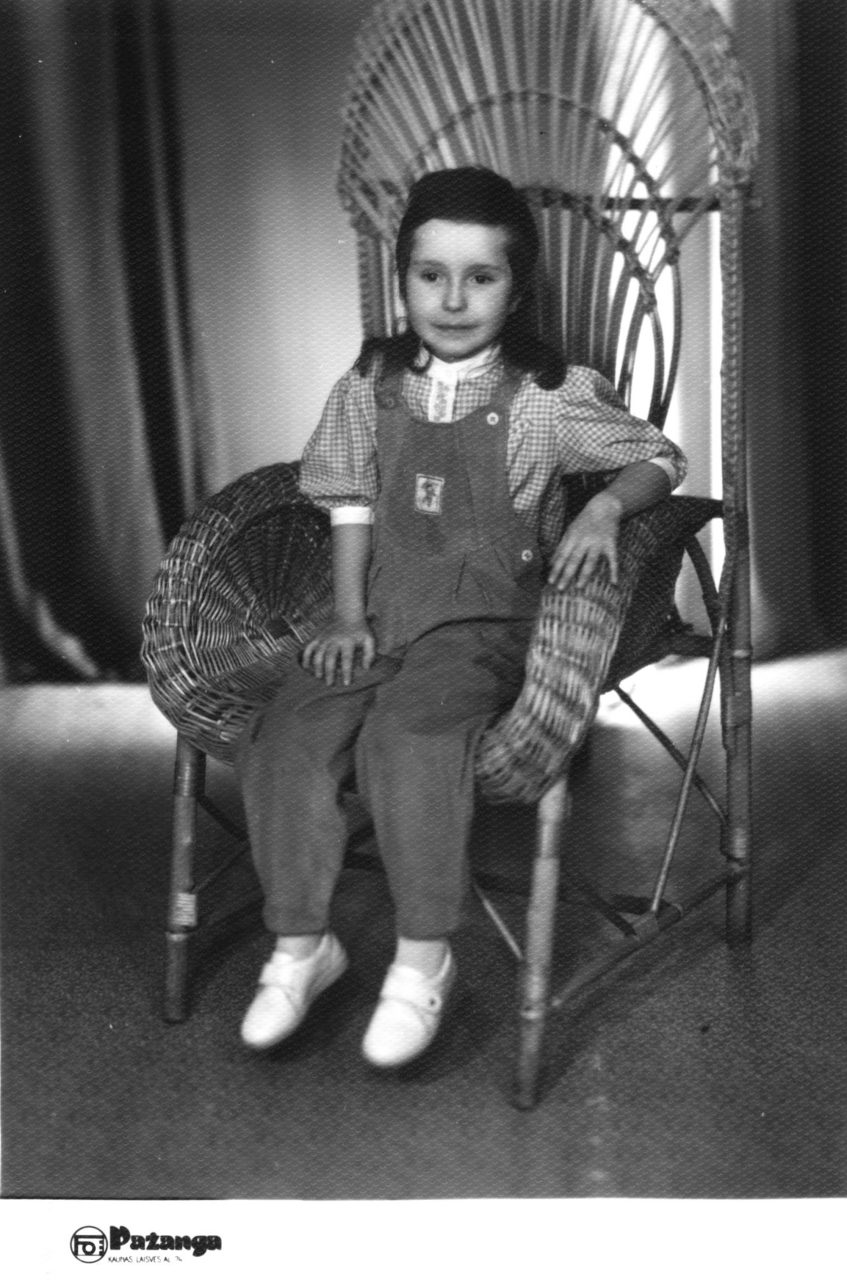
I’m five and a half in this photo. My mother brought me to the Pažanga photo studio in 1990, half a year before my heart surgery. It didn’t become the last photo of my life after all. The cut open and stitched back up doe continues to throb. During all this time, it has mastered various self-resurrecting techniques.
Once my least favorite genre has turned against me. It flies me around the world and pins the butterflies – stops – on the calendar. (Grasshopper flour can help you regain your strength.)
The archaic tradition of the photo studio disappeared in the digital cloud: is it progress or a foul?
I asked and I can also answer – just because. It’s just a flow of life, a temporality.
P. S. The couples that stay temporarily in the building on Laisvės Ave. 74 or other possible lovers continue the generational cycle.
Rugilė Barzdžiukaitė
This is the moment from my sixth birthday celebration, which took place at A. Šiaučiūnaitės St. 12 – 26 in Kalniečiai microdistrict of Kaunas. You can see a TV set in the background. About a year later, we watched the broadcast of the events of January 13 on it. There is a coffee table in front of the TV, on which I and my two-year-old brother Jokūbas knelt and said the Lord’s Prayer, which I had learned somewhere. We prayed that nothing would happen to our dad. He also went to Vilnius to defend Lithuania (and for us he was that Lithuania).
Not long after, Šiaučiūnaitės Street, where we lived, was renamed Lukšio. This TV has been replaced by Sony. I watched Twin Peaks on Sony, which inspired me to scare my brother. For example, I quietly told him that the devil was incarnated in an undecorated Christmas tree.
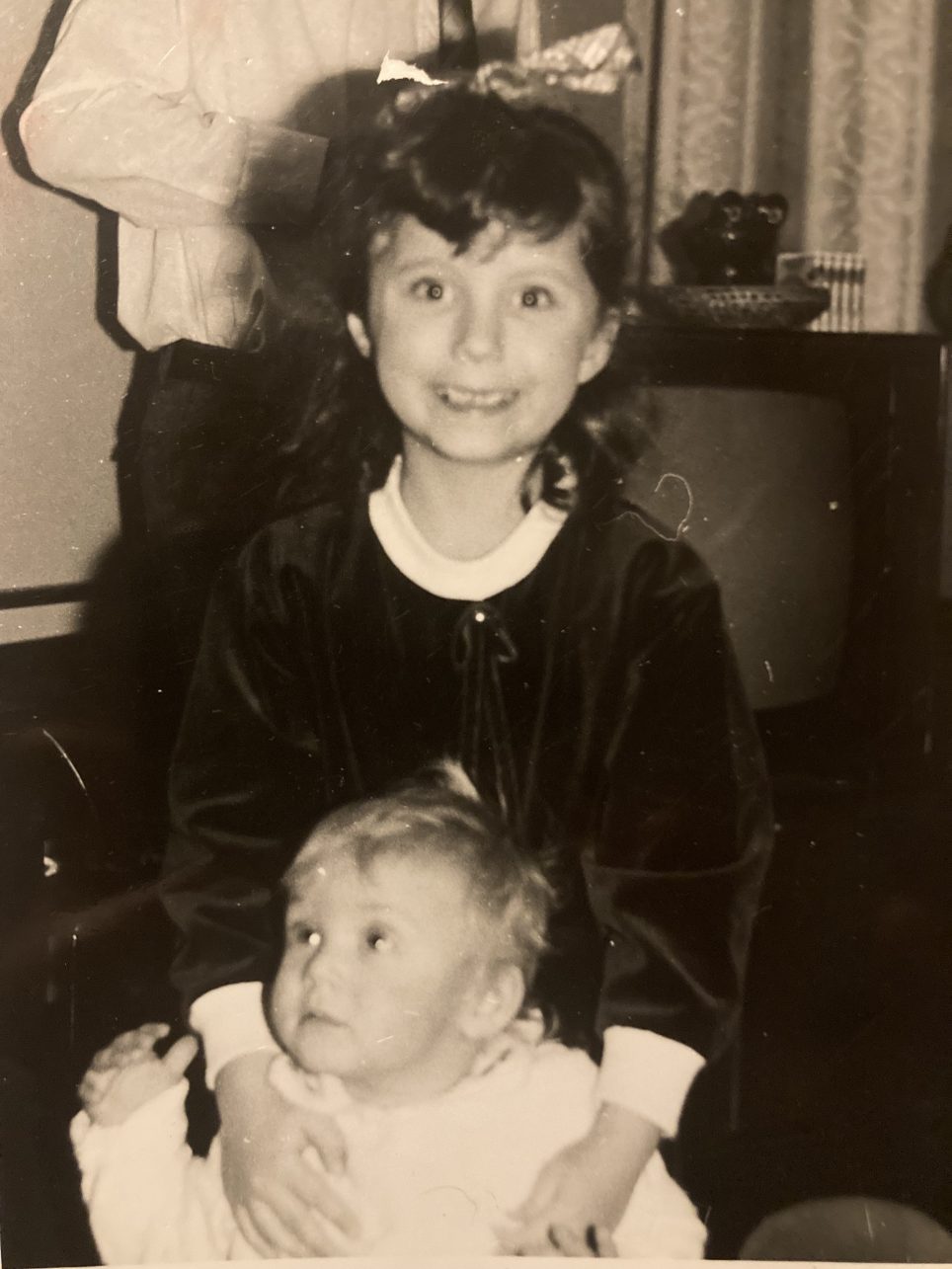
In the photograph, you can see two money boxes on top of the TV set, which I got on that same birthday. The frog was given by my grandmother and grandfather and the cube-shaped one with images of dollar bills was given by the godfather. Coins thrown into the frog could only be scraped out with a knife. After some time, it was broken by my brother. On the other hand, the dollar box was different: I could put my savings into it from the top and easily pull it out by opening the lid at the bottom; no knife or breaking it to pieces was required. Now all these things sound like metaphors for systems. When I visit Kaunas, one of my emotional money boxes is always full of joy, and the other is always filled with anxiety because of the prominent signs of a system that has been kicked out but not cleared out.
Lina Lapelytė
The building where we show Sun and Sea in Kaunas is special to me. This is where my mother worked after graduating from the Kaunas Polytechnic Institute (as it was called at the time). I spent my afternoons in the electrical design office at the drawing board, I knew the menus of all the canteens and my playground consisted of the trees in Vienybės Square. In the foyer, where the beach of the Sun and Sea will be set up, a Christmas party was held, where the children of the institute’s employees used to dance in a circle. Rugilė mentioned that her father also worked in the Miestprojektas building. It is possible that we danced in the same Christmas celebrations there. The photo shows a Christmas celebration, however, not in Miestprojektas but in Eglutė kindergarten.
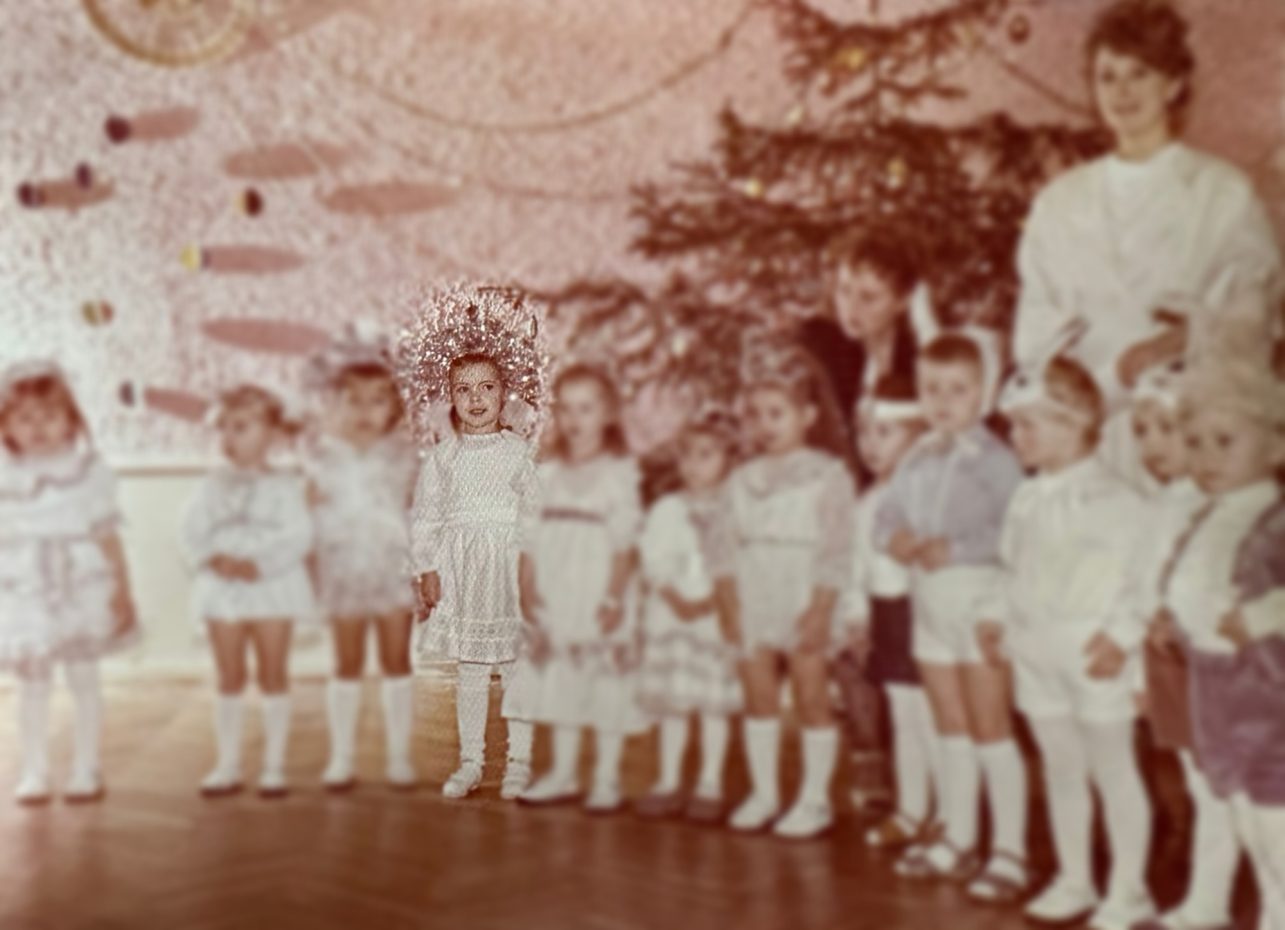
When I was a teenager, Kaunas started to open up slowly; similar interests connected me with new people. The Krishna temple became a place where alternative youth hung out on Sundays, both for the free lunch and the opportunity to meet other young people. On weekdays after school or before some events we would stop by Suflerio būdelė, Galera, or BO bars. Soon I began noticing some Jesuit Gymnasium students (they were easy to recognize by their uniforms). In Naujalis Gymnasium, where I studied, we knew each other well because the school was very small, and we shared many common activities.
This photo is from 2002. It captures a concert at Maironis’ house together with teacher Dalia Žarėnienė. In addition to the intense violin program, I started playing in several hard rock bands at that time. The daily route home after school was always prolonged because I passed through the Old Town and visited several galleries – mostly photography – on Vilniaus Street.
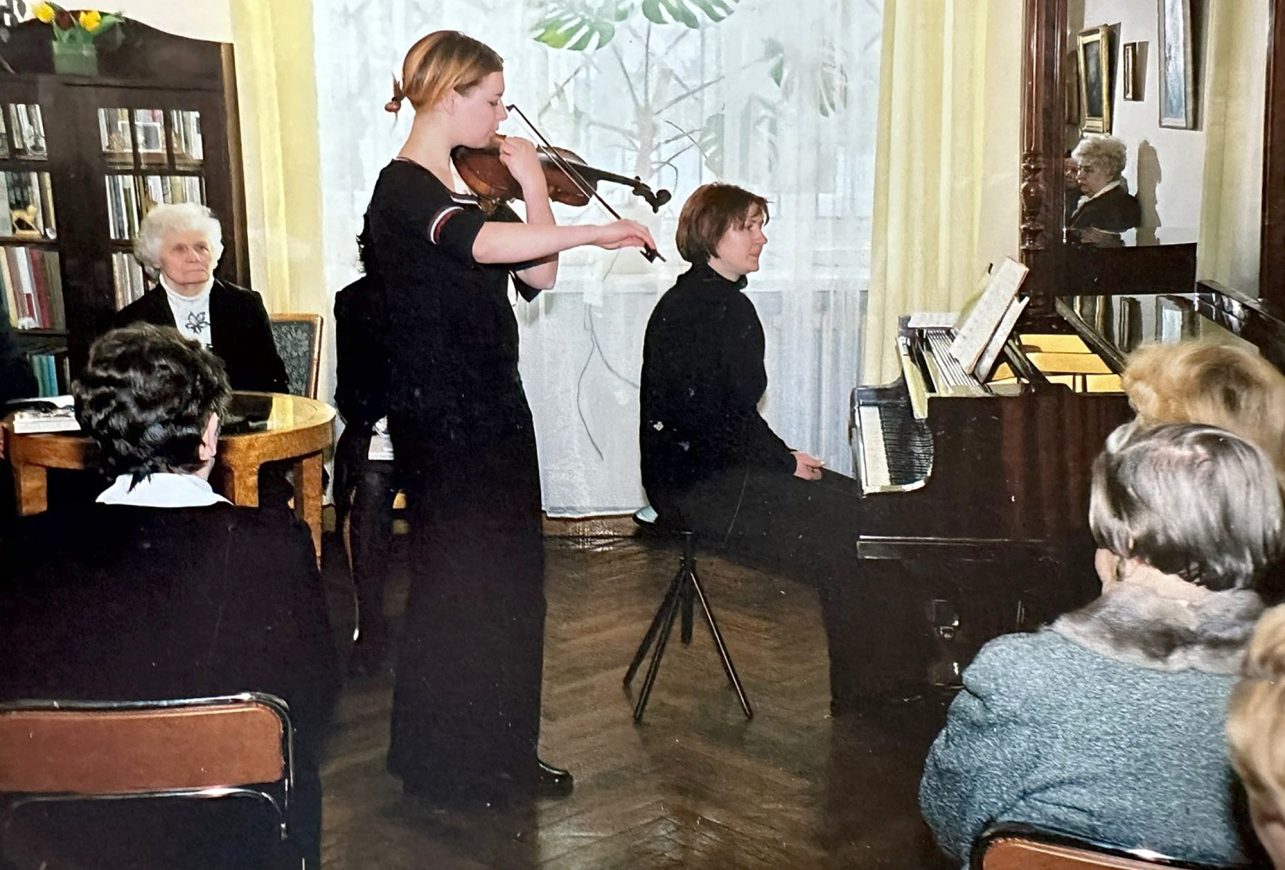
In spring, Kaunas Jazz was the place where you could meet everyone from VMU students to Kaunas intellectuals. Listening to world-famous artists, those concerts turned into community gatherings. With difficulty, I managed to get a job there as a volunteer. The opportunity to attend all the events for free seemed invaluable. While working there my circle of friends expanded even more. In Kaunas Jazz, I met Ramūnas Zilnys and Viktoras Bachmetjevas; I heard Jimi Tenor and realized that music can bring pleasure.
At that time, many of my friends were involved in photography – almost all of us had Zenit cameras inherited from our parents. This photograph that depicts me in the ruins of the Old Town of Kaunas was taken in 2001 or 2002 by Goda Budvytytė who is now a talented graphic designer who created the visual identity of Sun and Sea. To this day, we joke around saying that the golden shadows of the opera’s title that she created, predicted the winning of the Golden Lion at the Venice Biennale.

Eglė Paškevičienė
I was born and raised in Kaunas, and I am a third-generation Kaunas resident, so this city is very dear to me. My mother grew up in a family of intellectuals from the interwar period. My grandfather was a pilot of independent Lithuania who disappeared during the Second World War. I grew up in an environment where, from a young age, it was customary to organize children’s shows during various holidays. This is how my stage karma unfolded: life on stage starting with kindergarten performances and shows for neighbors, who after getting the ‘tickets’, watched the program prepared by me through the open windows for an hour.
Later, I sang for my classmates at Jonas Jablonskis secondary school (now gymnasium) as well as acted in plays. In the ninth grade, we formed an ensemble of four classmates, and we performed in the various schools in Kaunas. In the photo, I am rehearsing with my classmate Saulius Urbonas before going on air on Kaunas Television where we sang during the English language lessons that our school conducted for the whole Lithuania.
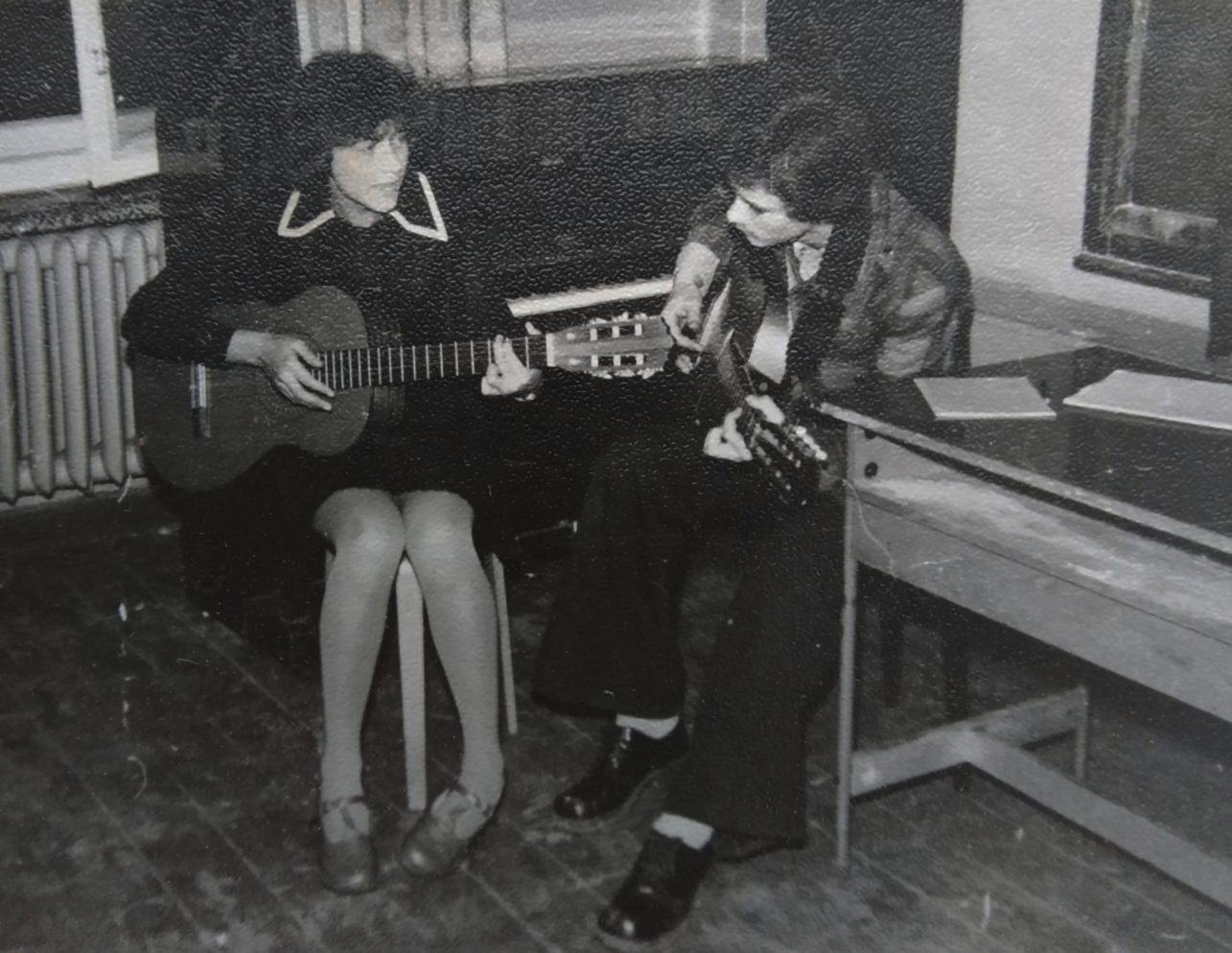
Later, my path led me to Juozas Naujalis Music College in Kaunas (now Conservatory), where I graduated with the highest marks and honors, as a singing major under assistant professor Jūratė Bukauskaitė. Subsequently, fate led me to the Kaunas State Choir. I was a part of it for 34 years; I traveled the world and worked with the most famous Lithuanian and foreign conductors. This photo was taken in 1983. It is my first year in the Kaunas State Choir. I am standing in the first row, third from the left. You can see Laisvės Avenue in the background, which has changed a lot since, and, most importantly, Lithuania restored its independence during that time!
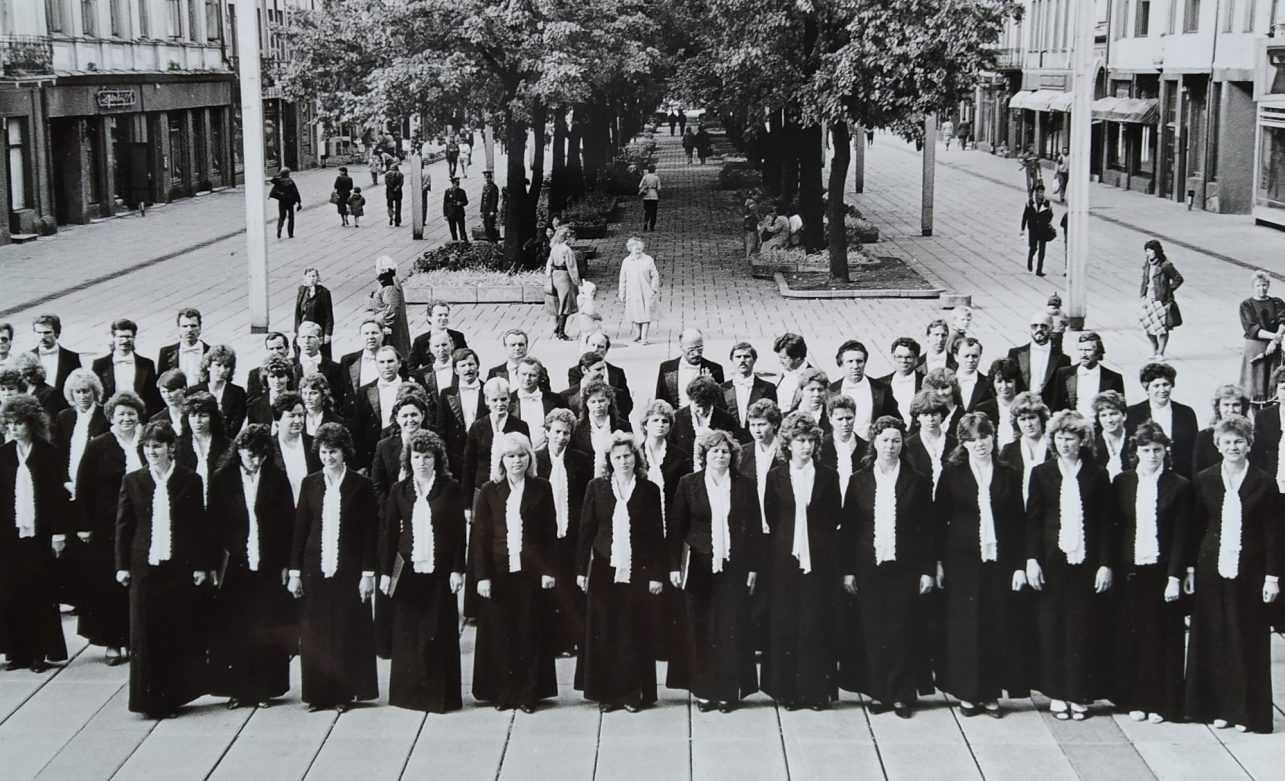
And now, when I return to my hometown with Sun and Sea, where I will sing for my friends, former colleagues, and relatives, I am filled with joy that we are presenting this interesting and relevant piece to the keen appreciation of the people of Kaunas. We showed the opera-performance in 26 countries, and 33 cities of the world, and I did not miss any of these trips, I successfully participated in all the performances!
Svetlana Bagdonaitė and Jonas Statkevičius
Jonas and I are the children of Laisvės Avenue, and we are depicted laughing in it, in this photograph made in 1970. When in 1961, this avenue was given its name back, we ran with other kids from my yard to the middle of the street and chanted while holding hands, “Free-dom A-ve-nue! Free-dom A-ve-nue!” This is where Jonas and I met also. Our homes were directly opposite each other, and Jonas often shone a mirror into my windows. And so, we have been together for 54 years.
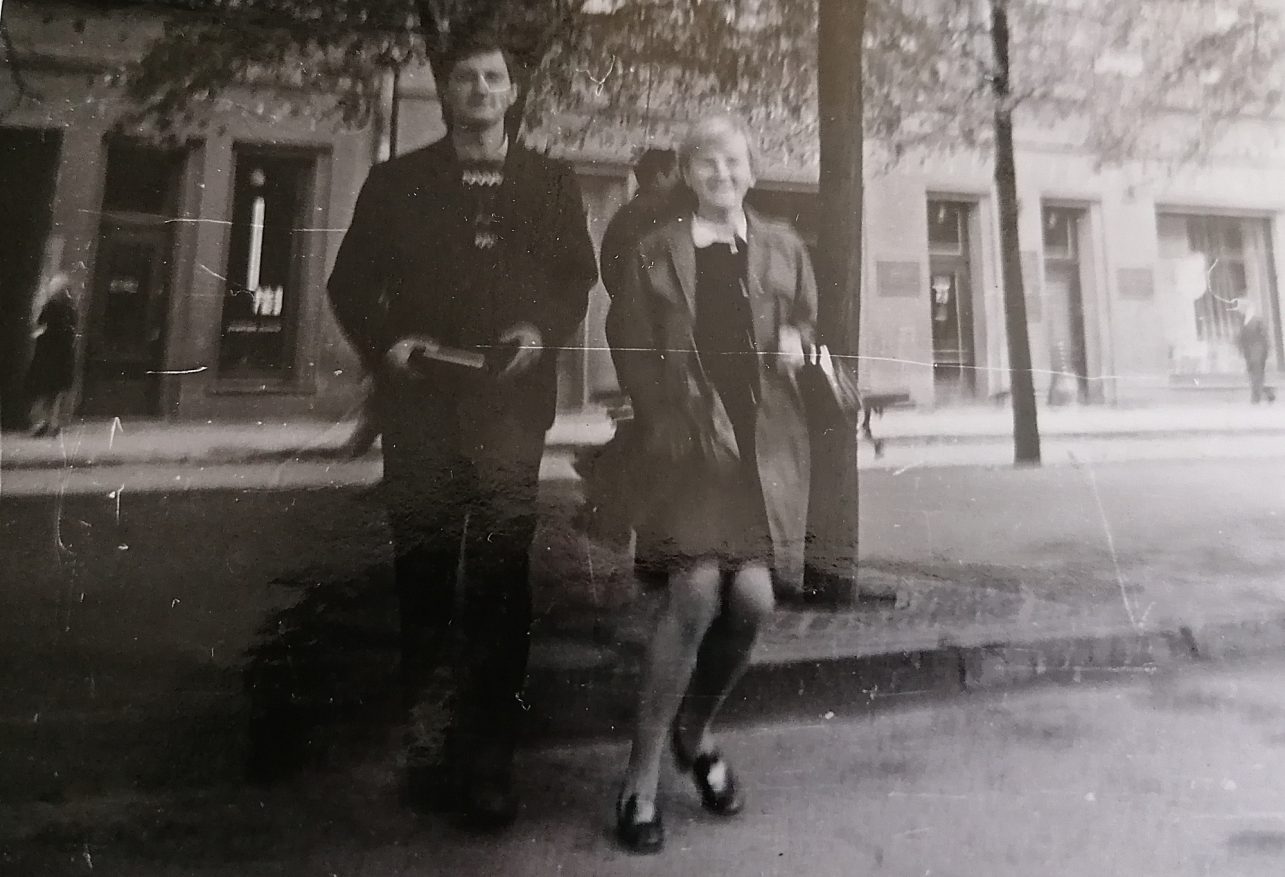
In this photo, Jonas (on the left) plays the bass guitar in the band called Ex Libris at the Vilnius bokštai ‘72 contest.

And here I am in 1969, participating in the pop music festival Kauno pavasaris. This is my first performance in the Kaunas Sports Hall. Today, the legendary hall has been renovated and once again receives full stands.
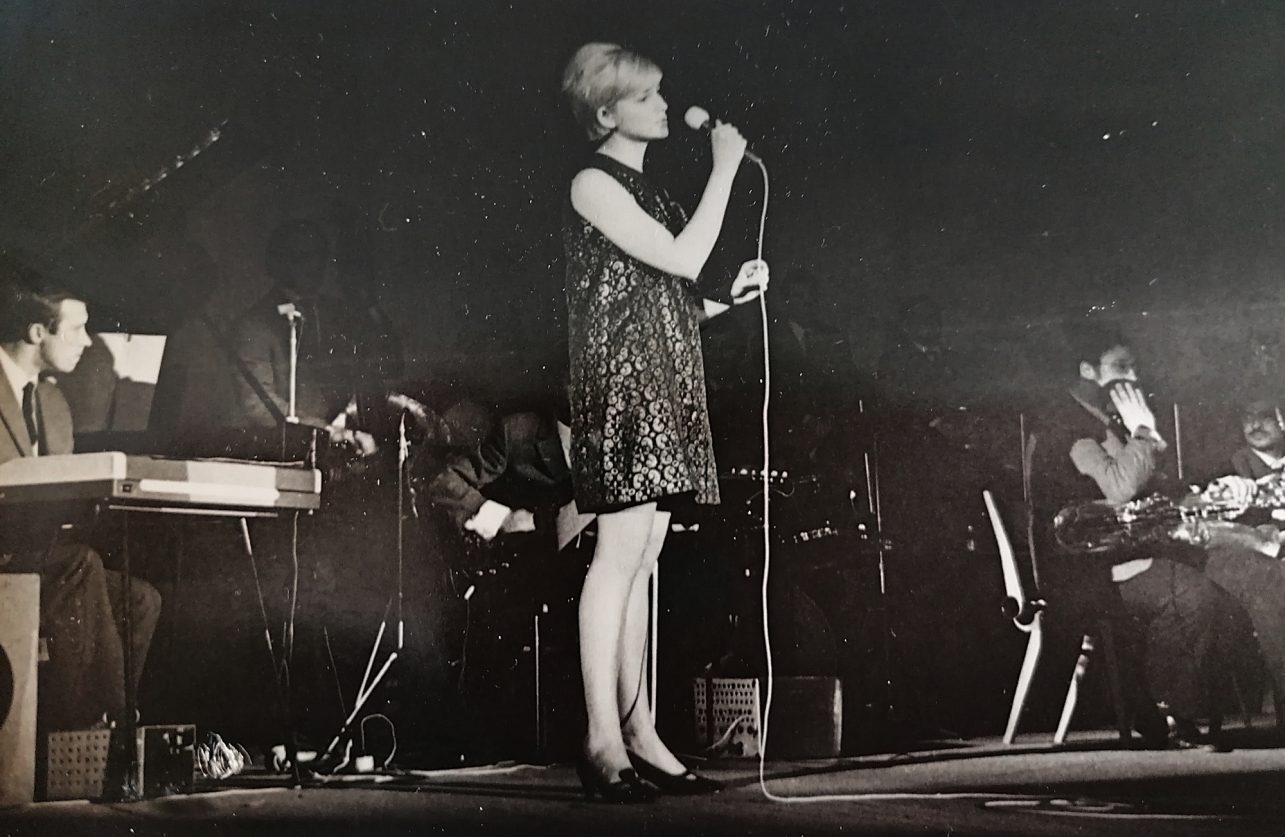
When in 1970 I sang the song “Jūreivių keliai” (music by Tamošiūnas, and lyrics by A. Dabulskis) at the Vilniaus bokštai pop song contest for young performers, my musical career accelerated. I actively participated in festivals, and concerts in Lithuania and abroad, and recorded many songs by composer Benjaminas Gorbulskis that he had written specifically for me. But life was not limited to music alone: I finished German language studies at the Vilnius Pedagogical Institute and defended my doctorate in social sciences at Vilnius University. I also headed the Institute of Rural Culture at the Lithuanian Academy of Agriculture for 16 years.
Here I am with my children in 1980 next to the legendary symbol of Kaunas: the two lions. Taking photos near them or on them is a tradition of Kaunas residents and guests of the city. Who could have thought that Jonas and I would visit 26 countries with the help of another Lion – a winged symbol of Venice, which the artists earned for their creation? And now, we are finally happy to be in our native Kaunas!
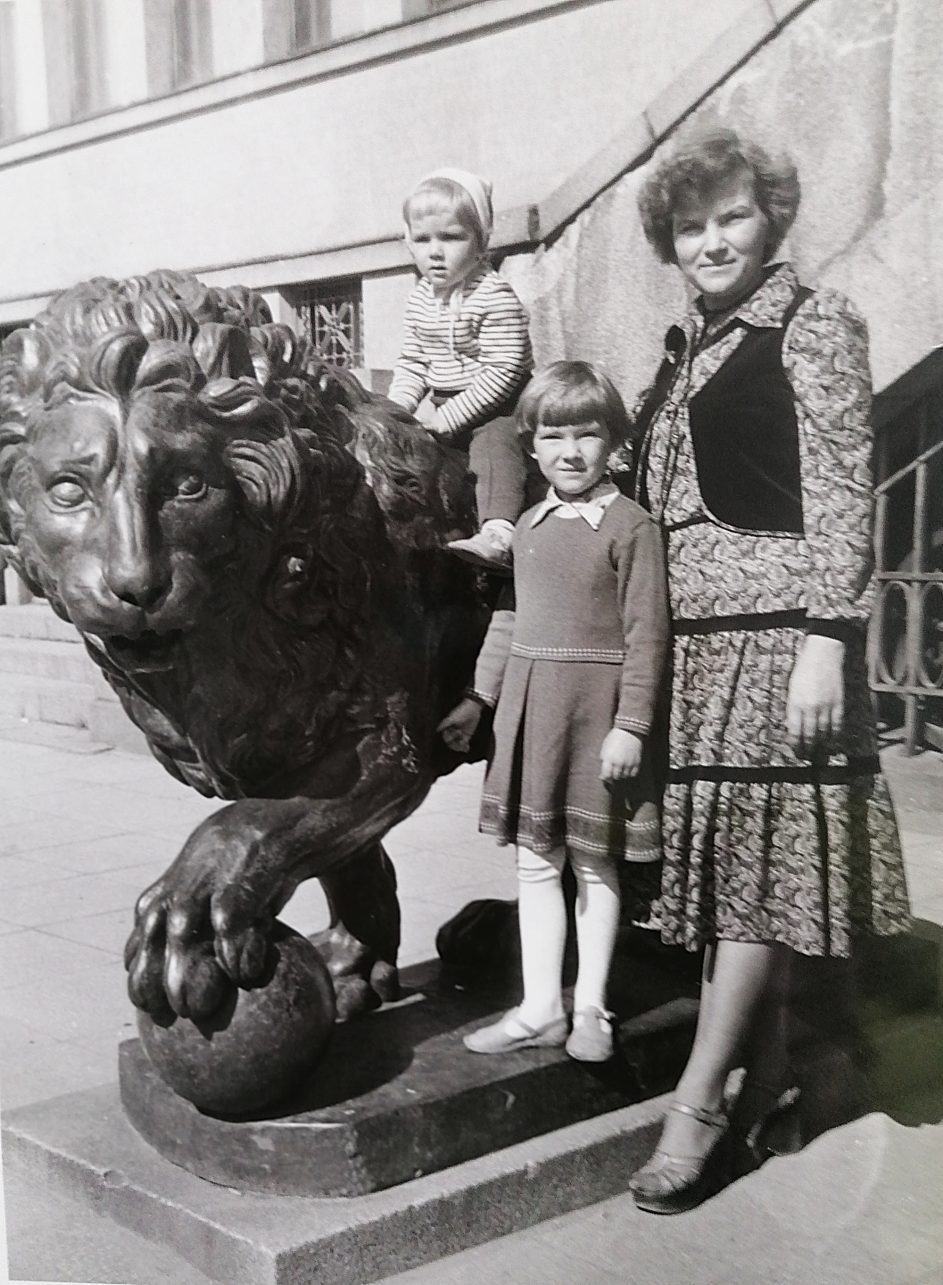
Ieva Marmienė
I came to the Juozas Gruodis Conservatory in Kaunas with a friend from music school to study choir conducting in 2005. I have always associated the Conservatory with Hogwarts. When I was 11, I got a book about a strange boy, Harry Potter, who went to study at a school of wizardry. It likely inspired me.
I moved from Kaišiadorys to Kaunas when I was 15. At that time, it seemed that it would be super cool to live separately from my parents, but coming from a small town, Kaunas looked really huge. I realized that I don’t know how to do many things. I remember crying in the dormitory kitchen and calling my mother for her to explain how to cook food. I had to learn how to plan and save but the whole dormitory was full of such people, so we also learned to ask each other for help. At that time, I received 25 litas a week from my mother and it should have been enough for train tickets to Kaišiadorys and back. I don’t know how I would have made it if it wasn’t for my mother’s aunt Aldutė, who lived in Kaunas. Once she even brought a pot of warm cabbage rolls to the dormitory! In addition to daily struggles, there were many fun moments. One of the most memorable ones was when the dormitory guard found a friend hiding in the closet, who snuck illegally into our dorm room for a small party. We were given a punishment – to decorate the corridors of the dormitory before Christmas. The years spent in the conservatory were wonderful. While studying here, we understood each other and didn’t feel like weirdos, even if we spent our free time locked in small classrooms playing, singing, or waving our hands. I will never forget how the teachers of the conservatory took care of me, how much I fell in love with music thanks to them, and how much time teacher Vilma Masienė devoted to me. While studying, I sang in several choirs. In the photo, I am standing first from the left with the Saluto choir at Kaunas Castle.
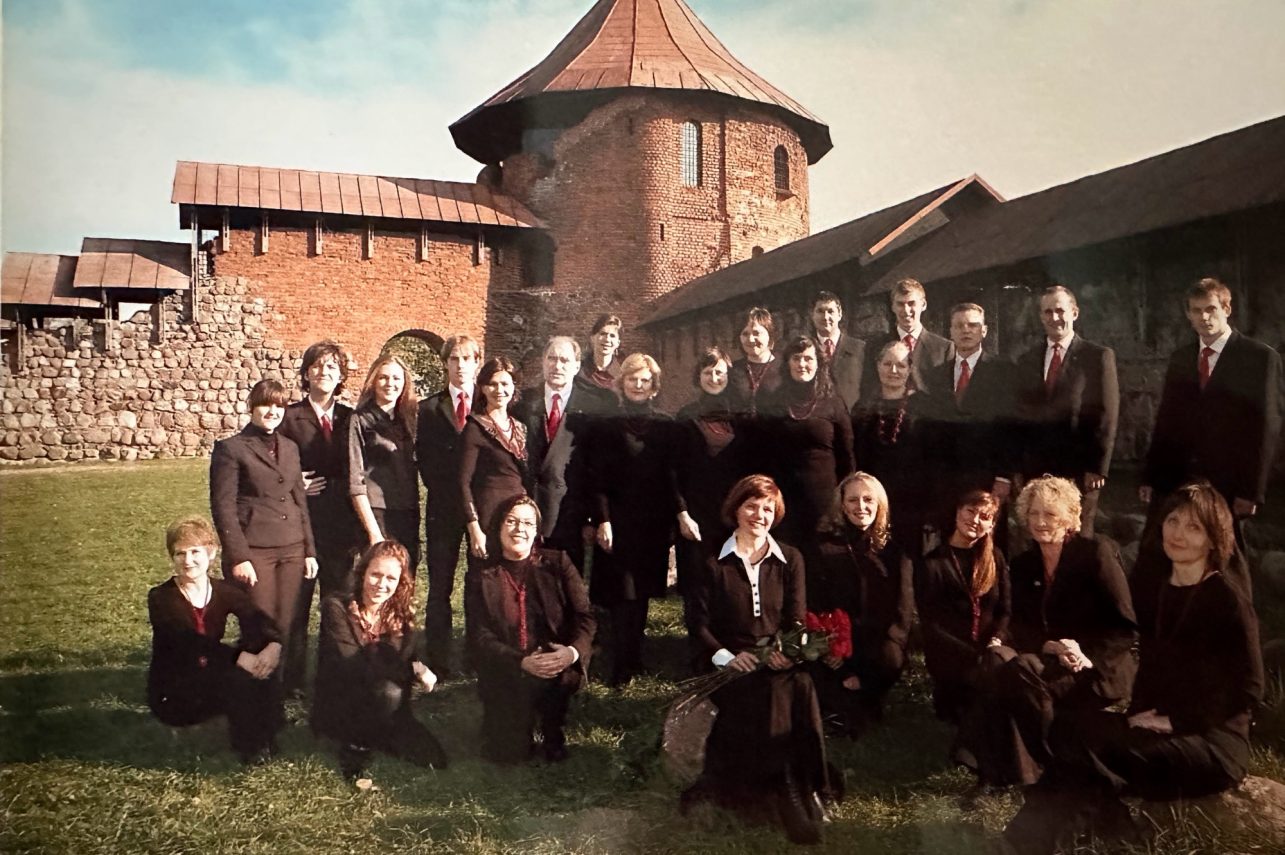
Here I am with my mother and aunt Aldutė after graduation. After finishing my studies at the conservatory, I entered the Lithuanian Academy of Music and Theater in Vilnius, where I continued my choral conducting studies. Finally, my dream of working with choirs, which I shared with my friend Ingrida Alonderė, with whom we studied and lived in the dormitory, came true. Currently, I lead the girls’ choir Carmina bellum and the men’s choir Kariūnas of the General Jonas Žemaitis Military Academy, as well as the choir of the cultural complex SODAS2123, and Ingrida is the director of Jauna muzika choir.
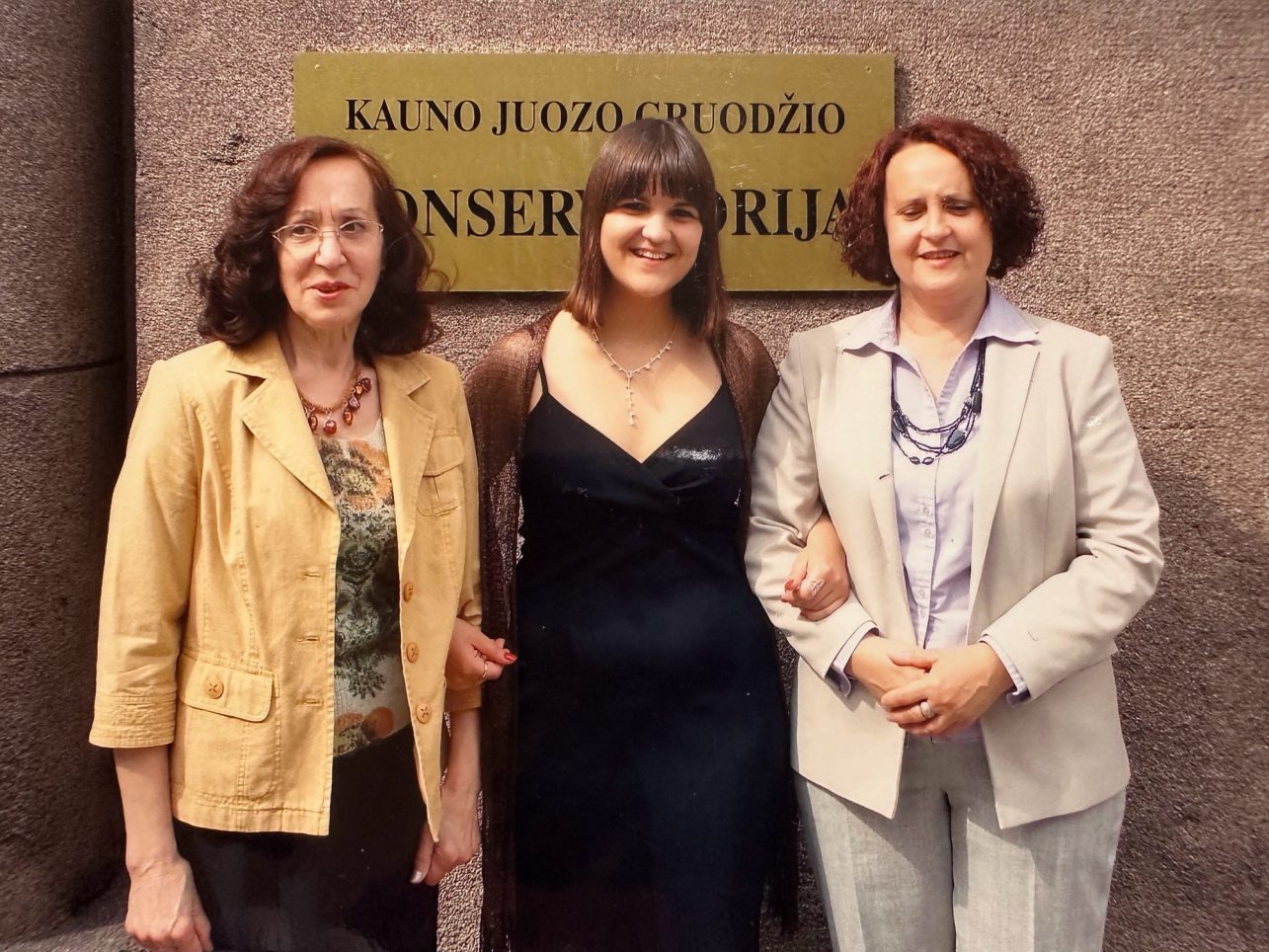
Although I haven’t lived in Kaunas for 15 years, I always feel nostalgic for this city. Laisvės Avenue and the city garden, where I spent a lot of time during my studies, make me sentimental. While living in Vilnius, I got to know many people from Kaunas, and it is often thanks to the people of Kaunas that my fate takes unexpected turns. One of the examples is Rugilė, Lina, and Vaiva, the creators of Sun and Sea. The other one is my husband Liudas, who is also from Kaunas. I don’t know if it is fate or that magical (conductor’s) wand keeps bringing me back to Kaunas.
